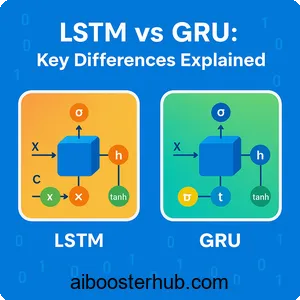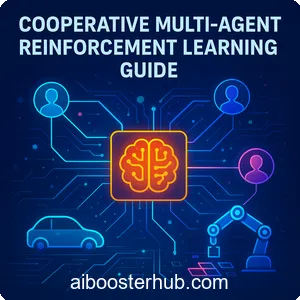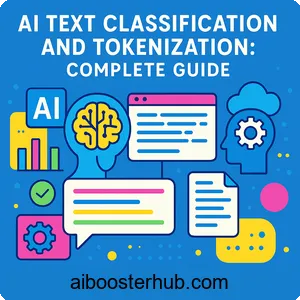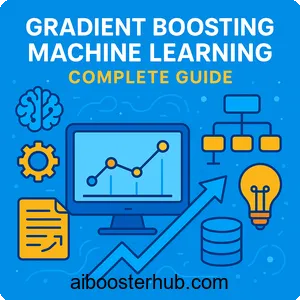Machine Learning Classification Algorithms: Complete Guide
Classification in machine learning is one of the most fundamental and widely-used techniques in artificial intelligence. From email spam detection to medical diagnosis, classification algorithms power countless applications that impact our daily lives. Understanding how these algorithms work is essential for anyone looking to build intelligent systems that can make predictions and decisions based on data.
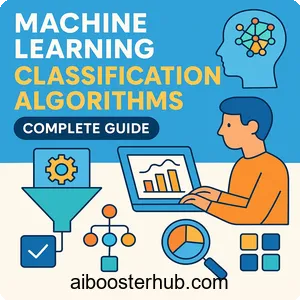
In this comprehensive guide, we’ll explore the core concepts of machine learning classification, examine the most popular classification algorithms, and provide practical examples to help you implement these techniques in your own projects.
Content
Toggle1. What is classification in machine learning?
Classification is a supervised learning task where the goal is to predict the categorical class labels of new instances based on past observations. In simpler terms, a classification model learns to assign items to predefined categories by analyzing labeled training data.
Understanding classification meaning
At its core, classification answers questions like “Which category does this belong to?” A classifier is a machine learning model that has learned patterns from training data and can apply those patterns to classify new, unseen data points into distinct groups or classes.
The process works by training a classification model on a dataset where each example has both input features and a known output label. Once trained, the model can predict labels for new inputs it hasn’t seen before.
Key components of classification
Every classification problem involves several essential elements:
- Features: These are the input variables or attributes that describe each data point. For example, in email classification, features might include word frequencies, sender information, and message length.
- Labels: These are the output categories or classes that the model predicts. Labels must be discrete and predefined before training begins.
- Training data: A labeled dataset used to teach the classifier how to distinguish between different classes.
- Classification model: The algorithm that learns patterns from the training data and makes predictions on new data.
Types of classification problems
Classification tasks come in different forms depending on the number of classes involved:
Binary classification is the simplest form, where the model chooses between exactly two classes. Common examples include spam detection (spam or not spam), fraud detection (fraudulent or legitimate), and medical diagnosis (disease present or absent). This type of problem is particularly straightforward because the classifier only needs to learn a single decision boundary.
Multi-class classification extends this concept to three or more mutually exclusive categories. When classifying handwritten digits (0-9), recognizing different species of flowers, or categorizing news articles into topics, we’re dealing with multi-class problems. Each instance belongs to exactly one class.
Multi-label classification allows an instance to belong to multiple classes simultaneously. For example, a movie might be tagged as both “action” and “thriller,” or a medical patient might be diagnosed with multiple conditions at once.
2. How classification algorithms work
Understanding the general workflow of classification algorithms helps clarify how machines learn to classify data effectively. While different algorithms use varying mathematical approaches, they all follow similar fundamental principles.
The supervised learning process
Classification falls under supervised learning, meaning the algorithm learns from labeled examples. During training, the classifier examines pairs of inputs and their corresponding correct outputs. It adjusts its internal parameters to minimize the difference between its predictions and the actual labels.
The learning process typically involves these steps:
- Data preparation: Collect and preprocess data, handling missing values, normalizing features, and splitting data into training and testing sets.
- Model training: Feed the training data to the algorithm, allowing it to discover patterns and relationships between features and labels.
- Validation: Evaluate the model’s performance on a separate validation set to tune hyperparameters and prevent overfitting.
- Testing: Assess the final model’s accuracy on unseen test data to estimate real-world performance.
- Deployment: Use the trained classifier to make predictions on new, unlabeled data in production.
Decision boundaries and classification
Most classification algorithms work by learning decision boundaries that separate different classes in the feature space. Imagine plotting data points on a graph where each axis represents a different feature. A decision boundary is like drawing a line (or curve, or surface in higher dimensions) that separates points of different classes.
For instance, in binary classification with two features, a linear classifier might draw a straight line that best separates positive and negative examples. More complex classifiers can learn curved or irregular boundaries to handle non-linear relationships.
Mathematical foundation
At a mathematical level, many classifiers estimate the probability that a given input belongs to each class. For binary classification, we might model the probability as:
$$ P(y=1|x) = f(w^T x + b) $$
Here, (x) represents the input features, (w) is a weight vector, (b) is a bias term, and (f) is an activation function that converts the linear combination into a probability. The model learns optimal values for (w) and (b) during training.
For multi-class problems, we extend this to compute probabilities for all classes, ensuring they sum to one:
$$ P(y=k|x) = \frac{e^{w_k^T x + b_k}}{\sum_{j=1}^{K} e^{w_j^T x + b_j}} $$
This softmax function transforms raw scores into a valid probability distribution over (K) classes.
3. Popular classification models
The field of machine learning offers numerous classification algorithms, each with unique strengths and ideal use cases. Let’s explore the most widely-used classifiers and understand when to apply them.
Logistic Regression
Despite its name, logistic regression is a classification algorithm, not a regression technique. It’s one of the simplest and most interpretable classification models, making it an excellent starting point for binary classification problems.
Logistic regression models the probability of a binary outcome using the logistic (sigmoid) function:
$$ \sigma(z) = \frac{1}{1 + e^{-z}} $$
where (z = w^T x + b). This function squashes any real-valued number into the range [0, 1], which we interpret as a probability.
Here’s a simple implementation using Python:
from sklearn.linear_model import LogisticRegression
from sklearn.model_selection import train_test_split
from sklearn.datasets import make_classification
import numpy as np
# Generate sample data for binary classification
X, y = make_classification(n_samples=1000, n_features=20,
n_informative=15, n_redundant=5,
random_state=42)
# Split into training and testing sets
X_train, X_test, y_train, y_test = train_test_split(
X, y, test_size=0.2, random_state=42
)
# Create and train the classifier
log_reg = LogisticRegression(max_iter=1000)
log_reg.fit(X_train, y_train)
# Make predictions
y_pred = log_reg.predict(X_test)
accuracy = log_reg.score(X_test, y_test)
print(f"Accuracy: {accuracy:.3f}")
# Get probability predictions
probabilities = log_reg.predict_proba(X_test)
print(f"Sample probability: {probabilities[0]}")
Logistic regression works best with linearly separable data and provides easily interpretable results through coefficient weights.
Decision Trees
Decision trees classify data by learning a series of if-then-else rules from the training data. The algorithm builds a tree structure where each internal node represents a test on a feature, each branch represents the outcome of that test, and each leaf node represents a class label.
The beauty of decision trees lies in their interpretability—you can literally visualize the decision-making process. They also handle both numerical and categorical features naturally without requiring feature scaling.
from sklearn.tree import DecisionTreeClassifier
from sklearn import tree
import matplotlib.pyplot as plt
# Create and train decision tree
dt_classifier = DecisionTreeClassifier(max_depth=5, random_state=42)
dt_classifier.fit(X_train, y_train)
# Evaluate performance
dt_accuracy = dt_classifier.score(X_test, y_test)
print(f"Decision Tree Accuracy: {dt_accuracy:.3f}")
# Visualize the tree (first few levels)
plt.figure(figsize=(20,10))
tree.plot_tree(dt_classifier, filled=True, max_depth=3)
plt.show()
However, decision trees can easily overfit training data, especially when grown too deep. This is where ensemble methods come in.
Random Forests
Random forests improve upon decision trees by building multiple trees and combining their predictions through voting (for classification) or averaging (for regression). Each tree is trained on a random subset of the data and considers only a random subset of features at each split.
This ensemble approach reduces overfitting and generally produces more robust predictions:
from sklearn.ensemble import RandomForestClassifier
# Create random forest with 100 trees
rf_classifier = RandomForestClassifier(n_estimators=100,
max_depth=10,
random_state=42)
rf_classifier.fit(X_train, y_train)
# Evaluate performance
rf_accuracy = rf_classifier.score(X_test, y_test)
print(f"Random Forest Accuracy: {rf_accuracy:.3f}")
# Feature importance
feature_importance = rf_classifier.feature_importances_
for i, importance in enumerate(feature_importance[:5]):
print(f"Feature {i}: {importance:.4f}")
Random forests are among the most reliable classification models and work well across many different types of problems without extensive tuning.
Support Vector Machines (SVM)
Support Vector Machines find the optimal hyperplane that maximizes the margin between different classes. The “support vectors” are the data points closest to the decision boundary, which are the most critical for determining the separator.
SVMs can handle non-linear classification through the kernel trick, which implicitly maps data to higher-dimensional spaces where linear separation becomes possible:
from sklearn.svm import SVC
# Linear SVM for linearly separable data
svm_linear = SVC(kernel='linear')
svm_linear.fit(X_train, y_train)
linear_accuracy = svm_linear.score(X_test, y_test)
print(f"Linear SVM Accuracy: {linear_accuracy:.3f}")
# RBF kernel for non-linear boundaries
svm_rbf = SVC(kernel='rbf', gamma='scale')
svm_rbf.fit(X_train, y_train)
rbf_accuracy = svm_rbf.score(X_test, y_test)
print(f"RBF SVM Accuracy: {rbf_accuracy:.3f}")
SVMs perform excellently in high-dimensional spaces and are memory-efficient since they only use support vectors for prediction. However, they can be slow to train on large datasets.
Naive Bayes
Naive Bayes classifiers apply Bayes’ theorem with the “naive” assumption that all features are independent given the class label. Despite this simplification rarely holding in practice, Naive Bayes often performs surprisingly well.
The classification rule follows from Bayes’ theorem:
$$ P(y|x) = \frac{P(x|y)P(y)}{P(x)} $$
The classifier chooses the class with the highest posterior probability. For Gaussian Naive Bayes, we assume features follow normal distributions:
from sklearn.naive_bayes import GaussianNB
# Create and train Naive Bayes classifier
nb_classifier = GaussianNB()
nb_classifier.fit(X_train, y_train)
# Evaluate performance
nb_accuracy = nb_classifier.score(X_test, y_test)
print(f"Naive Bayes Accuracy: {nb_accuracy:.3f}")
# Get class probabilities
nb_probs = nb_classifier.predict_proba(X_test[:5])
print("Probability predictions for first 5 samples:")
print(nb_probs)
Naive Bayes is particularly effective for text classification tasks like spam filtering and sentiment analysis, where the independence assumption is reasonable and training is extremely fast.
K-Nearest Neighbors (KNN)
K-Nearest Neighbors is an instance-based learning algorithm that classifies new points based on the majority class among their (k) nearest neighbors in the feature space. It’s non-parametric, meaning it doesn’t make assumptions about the underlying data distribution.
from sklearn.neighbors import KNeighborsClassifier
# Create KNN classifier with k=5
knn_classifier = KNeighborsClassifier(n_neighbors=5)
knn_classifier.fit(X_train, y_train)
# Evaluate performance
knn_accuracy = knn_classifier.score(X_test, y_test)
print(f"KNN Accuracy: {knn_accuracy:.3f}")
# Find optimal k value
accuracies = []
k_values = range(1, 21)
for k in k_values:
knn = KNeighborsClassifier(n_neighbors=k)
knn.fit(X_train, y_train)
accuracies.append(knn.score(X_test, y_test))
optimal_k = k_values[np.argmax(accuracies)]
print(f"Optimal k value: {optimal_k}")
KNN requires no training time but can be slow at prediction time since it must compute distances to all training points. It also requires careful feature scaling since it relies on distance metrics.
Neural Networks
Neural networks, particularly deep learning models, have revolutionized classification in recent years. Even simple feedforward neural networks can learn complex non-linear decision boundaries:
from sklearn.neural_network import MLPClassifier
# Create a multi-layer perceptron
nn_classifier = MLPClassifier(hidden_layer_sizes=(100, 50),
max_iter=500,
random_state=42)
nn_classifier.fit(X_train, y_train)
# Evaluate performance
nn_accuracy = nn_classifier.score(X_test, y_test)
print(f"Neural Network Accuracy: {nn_accuracy:.3f}")
Neural networks excel at learning hierarchical representations from raw data, making them particularly powerful for image, text, and speech classification tasks.
4. Evaluating classification performance
Building a classifier is only half the battle—you must also evaluate its performance properly. Different metrics reveal different aspects of a model’s behavior, and choosing the right metrics depends on your specific problem and requirements.
Accuracy and its limitations
Accuracy measures the proportion of correct predictions among all predictions:
$$ \text{Accuracy} = \frac{\text{Number of Correct Predictions}}{\text{Total Number of Predictions}} $$
While intuitive, accuracy can be misleading with imbalanced datasets. If 95% of emails are not spam, a classifier that always predicts “not spam” achieves 95% accuracy while being completely useless at detecting actual spam.
Confusion matrix
A confusion matrix provides a complete picture of classification performance by showing all combinations of predicted and actual classes:
from sklearn.metrics import confusion_matrix, classification_report
import seaborn as sns
# Generate predictions
y_pred = rf_classifier.predict(X_test)
# Create confusion matrix
cm = confusion_matrix(y_test, y_pred)
print("Confusion Matrix:")
print(cm)
# Visualize confusion matrix
plt.figure(figsize=(8, 6))
sns.heatmap(cm, annot=True, fmt='d', cmap='Blues')
plt.xlabel('Predicted Label')
plt.ylabel('True Label')
plt.title('Confusion Matrix')
plt.show()
For binary classification, the matrix contains four values:
- True Positives (TP): Correctly predicted positive cases
- True Negatives (TN): Correctly predicted negative cases
- False Positives (FP): Incorrectly predicted as positive (Type I error)
- False Negatives (FN): Incorrectly predicted as negative (Type II error)
Precision, recall, and F1-score
These metrics provide nuanced insights into classifier behavior:
Precision measures what proportion of positive predictions were actually correct:
$$ \text{Precision} = \frac{TP}{TP + FP} $$
High precision means few false alarms. This matters when false positives are costly, like in medical screening where false positives cause unnecessary anxiety and additional testing.
Recall (Sensitivity) measures what proportion of actual positives were correctly identified:
$$ \text{Recall} = \frac{TP}{TP + FN} $$
High recall means few missed cases. This is crucial when false negatives are dangerous, such as failing to detect cancer or fraud.
F1-Score harmonizes precision and recall into a single metric:
$$ F_1 = 2 \times \frac{\text{Precision} \times \text{Recall}}{\text{Precision} + \text{Recall}} $$
from sklearn.metrics import precision_score, recall_score, f1_score
# Calculate metrics
precision = precision_score(y_test, y_pred)
recall = recall_score(y_test, y_pred)
f1 = f1_score(y_test, y_pred)
print(f"Precision: {precision:.3f}")
print(f"Recall: {recall:.3f}")
print(f"F1-Score: {f1:.3f}")
# Comprehensive report
print("\nClassification Report:")
print(classification_report(y_test, y_pred))
ROC curve and AUC
The Receiver Operating Characteristic (ROC) curve plots the true positive rate against the false positive rate at various classification thresholds. The Area Under the Curve (AUC) summarizes the ROC curve into a single number between 0 and 1, where higher is better:
from sklearn.metrics import roc_curve, auc, roc_auc_score
# Get probability predictions
y_probs = rf_classifier.predict_proba(X_test)[:, 1]
# Calculate ROC curve
fpr, tpr, thresholds = roc_curve(y_test, y_probs)
roc_auc = auc(fpr, tpr)
# Plot ROC curve
plt.figure(figsize=(8, 6))
plt.plot(fpr, tpr, color='darkorange', lw=2,
label=f'ROC curve (AUC = {roc_auc:.2f})')
plt.plot([0, 1], [0, 1], color='navy', lw=2, linestyle='--')
plt.xlim([0.0, 1.0])
plt.ylim([0.0, 1.05])
plt.xlabel('False Positive Rate')
plt.ylabel('True Positive Rate')
plt.title('Receiver Operating Characteristic')
plt.legend(loc="lower right")
plt.show()
print(f"AUC Score: {roc_auc:.3f}")
An AUC of 0.5 indicates random guessing, while 1.0 represents perfect classification. The ROC curve helps you choose an optimal classification threshold based on the relative costs of false positives and false negatives.
Cross-validation
Cross-validation provides a more robust estimate of model performance by training and evaluating the classifier multiple times on different data splits:
from sklearn.model_selection import cross_val_score
# Perform 5-fold cross-validation
cv_scores = cross_val_score(rf_classifier, X, y, cv=5,
scoring='accuracy')
print(f"Cross-validation scores: {cv_scores}")
print(f"Mean CV accuracy: {cv_scores.mean():.3f} (+/- {cv_scores.std() * 2:.3f})")
This technique helps detect overfitting and provides confidence intervals for performance estimates.
5. Practical considerations and best practices
Successfully applying classification algorithms in real-world scenarios requires more than just understanding the theory. Several practical considerations can make the difference between a model that works in experiments and one that delivers value in production.
Feature engineering and selection
The quality of your features often matters more than the choice of classifier. Good features make patterns more apparent and easier for algorithms to learn.
Feature engineering involves creating new features from existing ones. For example, when classifying text documents, you might create features like word counts, TF-IDF scores, or average word length. For time series data, you might extract statistical properties like mean, variance, or trend.
Feature selection helps identify the most informative features while reducing dimensionality:
from sklearn.feature_selection import SelectKBest, f_classif
# Select top 10 features
selector = SelectKBest(score_func=f_classif, k=10)
X_selected = selector.fit_transform(X_train, y_train)
# Get selected feature indices
selected_indices = selector.get_support(indices=True)
print(f"Selected feature indices: {selected_indices}")
# Transform test data
X_test_selected = selector.transform(X_test)
Reducing features can improve model performance, decrease training time, and make models more interpretable.
Handling imbalanced datasets
Real-world classification problems often involve imbalanced classes where one class vastly outnumbers others. This can cause classifiers to ignore minority classes.
Several strategies address class imbalance:
Resampling techniques modify the training data distribution:
from imblearn.over_sampling import SMOTE
from imblearn.under_sampling import RandomUnderSampler
from collections import Counter
# Check class distribution
print(f"Original distribution: {Counter(y_train)}")
# Oversample minority class with SMOTE
smote = SMOTE(random_state=42)
X_resampled, y_resampled = smote.fit_resample(X_train, y_train)
print(f"After SMOTE: {Counter(y_resampled)}")
# Train on resampled data
rf_balanced = RandomForestClassifier(random_state=42)
rf_balanced.fit(X_resampled, y_resampled)
Class weights penalize mistakes on minority classes more heavily:
# Use class weights to handle imbalance
rf_weighted = RandomForestClassifier(class_weight='balanced',
random_state=42)
rf_weighted.fit(X_train, y_train)
Choosing appropriate metrics like F1-score, precision-recall curves, or AUC-PR instead of accuracy ensures you evaluate model performance fairly.
Hyperparameter tuning
Every classification algorithm has hyperparameters that control its behavior. Finding optimal values can significantly improve performance:
from sklearn.model_selection import GridSearchCV
# Define parameter grid
param_grid = {
'n_estimators': [50, 100, 200],
'max_depth': [5, 10, 15, None],
'min_samples_split': [2, 5, 10],
'min_samples_leaf': [1, 2, 4]
}
# Perform grid search with cross-validation
grid_search = GridSearchCV(
RandomForestClassifier(random_state=42),
param_grid,
cv=5,
scoring='f1',
n_jobs=-1
)
grid_search.fit(X_train, y_train)
print(f"Best parameters: {grid_search.best_params_}")
print(f"Best F1 score: {grid_search.best_score_:.3f}")
# Use best model
best_classifier = grid_search.best_estimator_
For large parameter spaces, consider RandomizedSearchCV, which samples parameter combinations randomly and often finds good solutions faster than exhaustive search.
Data preprocessing
Proper preprocessing ensures your classifier receives clean, well-formatted input:
Handling missing values is essential since most classifiers can’t process incomplete data:
from sklearn.impute import SimpleImputer
# Impute missing values with mean
imputer = SimpleImputer(strategy='mean')
X_imputed = imputer.fit_transform(X_train)
Feature scaling ensures all features contribute equally to distance-based algorithms:
from sklearn.preprocessing import StandardScaler
# Standardize features
scaler = StandardScaler()
X_scaled = scaler.fit_transform(X_train)
X_test_scaled = scaler.transform(X_test)
Encoding categorical variables converts non-numeric features into numeric form:
from sklearn.preprocessing import LabelEncoder, OneHotEncoder
# Example with categorical data
categories = ['red', 'blue', 'green', 'blue', 'red']
# Label encoding (ordinal)
label_encoder = LabelEncoder()
encoded_labels = label_encoder.fit_transform(categories)
print(f"Label encoded: {encoded_labels}")
# One-hot encoding (nominal)
one_hot = OneHotEncoder(sparse=False)
encoded_onehot = one_hot.fit_transform(np.array(categories).reshape(-1, 1))
print(f"One-hot encoded shape: {encoded_onehot.shape}")
Pipeline creation
Scikit-learn pipelines streamline the entire classification workflow, ensuring preprocessing steps and model training happen in the correct order:
from sklearn.pipeline import Pipeline
from sklearn.preprocessing import StandardScaler
# Create complete pipeline
classification_pipeline = Pipeline([
('scaler', StandardScaler()),
('feature_selection', SelectKBest(k=10)),
('classifier', RandomForestClassifier(random_state=42))
])
# Train entire pipeline
classification_pipeline.fit(X_train, y_train)
# Make predictions
pipeline_predictions = classification_pipeline.predict(X_test)
pipeline_accuracy = classification_pipeline.score(X_test, y_test)
print(f"Pipeline accuracy: {pipeline_accuracy:.3f}")
Pipelines prevent data leakage, make code cleaner, and simplify model deployment.
6. Real-world applications
Classification algorithms solve countless practical problems across diverse industries. Understanding these applications helps you recognize opportunities to apply these techniques and learn from successful implementations.
Medical diagnosis
Healthcare leverages classification to diagnose diseases, predict patient outcomes, and personalize treatment plans. A binary classification model might predict whether a tumor is benign or malignant based on cell characteristics, while multi-class classifiers can distinguish between different disease types.
For instance, classifying diabetic retinopathy from retinal images helps screen patients at scale, enabling early intervention. Features might include blood vessel patterns, hemorrhage presence, and microaneurysm counts. Random forests and neural networks have proven particularly effective for such medical imaging tasks.
Email spam filtering
Spam detection represents one of the earliest and most successful classification applications. Email providers classify billions of messages daily, protecting users from unwanted content.
Text-based features like word frequencies, sender reputation scores, and header information feed into classifiers—often Naive Bayes or logistic regression due to their speed and interpretability. The model learns that words like “congratulations,” “winner,” and “click here” correlate with spam, while legitimate emails exhibit different patterns.
Credit risk assessment
Financial institutions use classification to evaluate loan applications and detect fraudulent transactions. A credit scoring model might classify applicants as low, medium, or high risk based on income, credit history, employment status, and other factors.
Gradient boosting algorithms like XGBoost have become popular for these tasks because they handle mixed feature types well and provide excellent performance. Interpretability is crucial here since regulations often require explaining why a loan was denied.
Image recognition
From facial recognition to autonomous vehicles, image classification enables machines to understand visual content. Convolutional neural networks have revolutionized this field, achieving superhuman performance on many tasks.
A self-driving car’s vision system might classify objects as pedestrians, vehicles, traffic signs, or road markings thousands of times per second. These classifications inform critical driving decisions, requiring extremely high accuracy and reliability.
Sentiment analysis
Companies analyze customer feedback, social media posts, and product reviews to understand public opinion. Sentiment classification typically categorizes text as positive, negative, or neutral.
Modern sentiment classifiers combine traditional machine learning with deep learning. They might use word embeddings to capture semantic meaning and recurrent neural networks to model sequential dependencies in text. This helps businesses respond to customer concerns and track brand perception.
Recommendation systems
While often associated with collaborative filtering, classification plays a role in recommendation engines. A classifier might predict whether a user will click on a suggested product or whether they’ll enjoy a recommended movie.
These binary classification problems help personalize user experiences across e-commerce platforms, streaming services, and content websites. Features include user demographics, past behavior, item characteristics, and contextual information like time of day.
Quality control
Manufacturing uses classification to identify defective products automatically. Computer vision systems inspect items on production lines, classifying them as acceptable or defective based on visual features.
This application demands high recall to catch defects while maintaining reasonable precision to avoid wasting good products. The cost of false negatives (shipping defective products) often far exceeds the cost of false positives (discarding good items), influencing how decision thresholds are set.
7. Conclusion
Classification algorithms form the backbone of countless machine learning applications, enabling systems to make intelligent decisions by learning from data. Throughout this guide, we’ve explored the fundamental concepts of classification in machine learning, examined popular classification models ranging from simple logistic regression to complex neural networks, and discussed practical considerations for building effective classifiers.
The key to success with classification lies not just in understanding individual algorithms, but in knowing when to apply each technique, how to evaluate performance properly, and how to address common challenges like imbalanced data and feature engineering. Whether you’re building a spam filter, medical diagnosis system, or image recognition application, the principles and techniques covered here provide a solid foundation for creating robust classification solutions that deliver real value.


